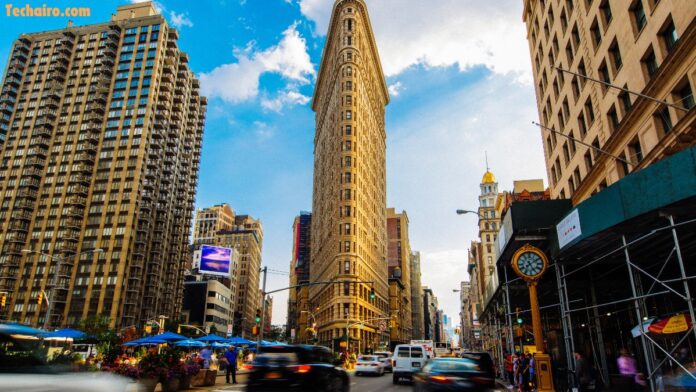The Flatiron Building, an iconic skyscraper located at 175 Fifth Avenue in Manhattan, New York City, has long been a symbol of architectural innovation and urban prominence. This case study explores the pivotal role of scaffolding in the meticulous restoration and preservation of the Flatiron Building, highlighting the challenges faced, innovative solutions implemented, and successful outcomes achieved through careful planning and execution.
Introduction to the Flatiron Building
Completed in 1902, the Flatiron Building is renowned for its distinctive triangular shape, which maximizes the use of its narrow lot at the intersection of Fifth Avenue and Broadway. Designed by architect Daniel Burnham, the Flatiron Building stands 285 feet tall and was one of the tallest skyscrapers in New York City at the time of its completion. Its Beaux-Arts architectural style and intricate terra-cotta facade make it a beloved landmark in the city’s skyline.
Project Overview: Facade Restoration and Structural UpgradeChallenges
Over the decades, exposure to New York City’s weather and environmental factors had taken a toll on the Flatiron Building’s exterior facade and structural elements. The restoration project aimed to address several critical challenges:
- Preservation of Architectural Integrity: Ensuring that the restoration efforts maintained the original design and historical significance of the Flatiron Building.
- Structural Rehabilitation: Repairing and reinforcing the building’s terra-cotta facade, ornamental details, and internal structural components.
- Safety and Logistics: Minimizing disruption to pedestrian and vehicular traffic around one of New York City’s busiest intersections.
Scaffolding Solution
To facilitate the comprehensive restoration and structural upgrade of the Flatiron Building, a sophisticated scaffolding system was meticulously planned and executed:
- Customized Design: Scaffolding engineers collaborated closely with preservation architects to design a bespoke scaffolding structure that could safely access all areas requiring restoration, including the building’s unique triangular shape and decorative elements.
- Adaptability: The scaffolding system was tailored to conform to the Flatiron Building’s triangular footprint and intricate facade, ensuring precise access without compromising the building’s architectural integrity.
- Safety Measures: Rigorous safety protocols were implemented, including the installation of guardrails, toe boards, and non-slip surfaces to protect workers and pedestrians below from falling debris and ensure safe working conditions.
- Logistical Coordination: Detailed logistical planning ensured efficient material handling, waste removal, and coordination of construction activities to minimize disruptions in the bustling urban environment.
Implementation and Execution
The installation and restoration process of the Flatiron Building’s facade followed a meticulous timeline and methodology:
- Site Preparation: Clearing and securing the area around the Flatiron Building to accommodate scaffolding assembly and ensure public safety.
- Scaffolding Assembly: Erecting the scaffolding structure around the building’s perimeter, carefully aligning it with the unique triangular shape and ornate details of the facade.
- Restoration Work: Skilled craftsmen and restoration specialists accessed the scaffolding platforms to meticulously repair and clean the building’s terra-cotta tiles, ornamental features, and structural components.
- Quality Assurance: Ongoing inspections and quality checks were conducted throughout the restoration project to ensure adherence to preservation standards, safety regulations, and the highest standards of craftsmanship.
Benefits and Outcomes1. Preservation of Historical Significance
The scaffolding system enabled precise access to delicate architectural features, facilitating the preservation and restoration of the Flatiron Building’s iconic design and historical significance.
2. Enhanced Safety and Efficiency
By providing stable and secure platforms, the scaffolding system ensured the safety of workers and accelerated restoration activities, leading to efficient project completion within the scheduled timeframe.
3. Community Impact
The successful restoration of the Flatiron Building’s facade contributed to the revitalization of Manhattan’s historic district, enhancing the city’s architectural landscape and preserving a cherished landmark for future generations to admire and enjoy.
Conclusion
The restoration of the Flatiron Building’s facade exemplifies the indispensable role of scaffolding in preserving and enhancing iconic architectural landmarks. Through meticulous planning, innovative solutions, and a commitment to historical preservation, scaffolding facilitated the successful completion of this prestigious project while safeguarding the architectural legacy of one of New York City’s most recognizable skyscrapers. As urban centers continue to evolve and embrace their cultural heritage, the restoration of landmarks like the Flatiron Building underscores the enduring value of historical preservation and the essential role of scaffolding in achieving these preservation goals with precision, safety, and excellence.




